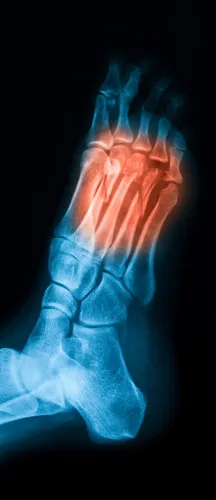Distinguish Fact From Fiction Coding Heart Valve Conditions

When in doubt, stick to the ICD-10-CM coding process. The world of procedural and diagnostic coding is governed by a series of rules, regulations, and guidelines that you must follow with detail and precision. However, every once in a while, you’ll come across a guideline that’s treated as gospel — until someone questions the original source. With so many different sets of guidelines to adhere to, it’s your responsibility to sift through those that come from respected sources and those that wind up as no more than a good old case of coding folklore. Today, you’re going to tackle a popular ICD-10-CM “guideline” on rheumatic heart valve disease coding — that turns out to be not much of a guideline at all. Dive in and find out the truth on when it is and is not appropriate to designate a heart valve condition as rheumatic. See What All the Fuss is About There are plenty of instances within the ICD-10-CM guidelines where you are instructed to code an unspecified condition using a more specific descriptor than what may be documented. For instance, have look at this ICD-10-CM guideline on fracture coding: “Additionally, for diabetes patients, ICD-10-CM instructs that, ‘if the type of diabetes mellitus is not documented in the medical record the default is E11.- [Type 2 diabetes mellitus],’” says Lindsay Della Vella, COC, medical coding auditor at Precision Healthcare Management in Media, Pennsylvania. However, there’s one set of diagnoses that contrary to some popular belief, doesn’t always subscribe to a set of rules where you must “default” to a particular condition. Consider the following coding “myth” on heart valve disorders and how to properly address diagnoses involving these conditions: Myth: Heart valve disorders are considered rheumatic unless stated otherwise. At first glance, you might think this one is a cake walk. Do a simple search for the keyword “rheumatic” within the ICD-10-CM guidelines and nothing appears. Case closed, right? Not so fast. Depending on who you ask, this guideline has somehow forged its way into the minds of coders as a piece of factual documentation. This can be attributed to numerous different factors. First, a simple Google search will reveal that this fictitious guideline has been at the forefront of coding conversations for quite some time. While discussion among coders is one thing, the situation becomes even more complicated when you find this exact guideline quoted within a Centers for Medicare and Medicaid Services (CMS) PowerPoint entitled ICD-10: Clinical Concepts for Cardiology. Specifically, this PowerPoint incorrectly instructs that “ICD-10 assumes heart valve diseases are rheumatic; if this is not the case, notate otherwise.” CMS doesn’t offer any further explanation aside the one sentence contribution on the matter, but it’s safe to assume, unless elaborated on further in the future, that it’s an oversight on the part of CMS. Discern Fact From Fiction The reality of the situation is that this guideline isn’t entirely inaccurate. The underlying problem is that the guideline is addressing all heart valve disorders, when in actuality, only a particular set of heart valve related diagnostic criteria should be presumed rheumatic without further specification. In looking at the guideline further, it might be that CMS is referring exclusively to unspecified heart valve diseases. For instance, using the ICD-10-CM index, Disease ⇒ tricuspid leads you to code I07.9 (Rheumatic tricuspid valve disease, unspecified). You’ll find numerous instances such as this within the ICD-10-CM manual where the default diagnosis is rheumatic. However, you’ll also encounter instances contradicting the guideline at hand. For example, when you search the ICD-10-CM index for Disease ⇒ heart ⇒ aorta, you’ll be directed toward I35.9 (Nonrheumatic aortic valve disorder, unspecified). As you can see, this guideline is subjective to various diagnoses. To add insult to injury, there’s one area within the ICD-10-CM tabular that adds to the confusion. Consider the “Includes” note labeled under category code I05 (Rheumatic mitral valve diseases): As you can see, this seemingly benign parenthetical note contributes to the underlying confusion. If you take a further look, ICD-10-CM states through this Includes note that the following mitral valve conditions should be considered rheumatic if left unspecified: The ICD-10-CM index and tabular will instruct you to code each of these conditions as rheumatic unless they are documented as nonrheumatic. However, this does not even include all mitral valve diseases, as the Includes note specifically leaves out I05.1 (Rheumatic mitral insufficiency). And, as you’ll see using the ICD-10-CM index, an unspecified mitral insufficiency diagnosis leads you to I34.0 (Nonrheumatic mitral (valve) insufficiency), not I05.1. As you can see, no exclusive guideline exists on how to universally report heart valve conditions as either rheumatic or nonrheumatic. Rather, you’ve got to decide on a case-by-case basis. However, the most important takeaway point is that falling victim to a fictional guideline such as this can be avoided by simply making sure you respect the ICD-10-CM coding process. “The index [and tabular] is all coders need to code valve disease documented in the record,” says Sheri Poe Bernard, CPC, of Poe Bernard Consulting in Salt Lake City, Utah. “Coders will often end up with the rheumatic codes because these are typically the defaults in ICD-10-CM. Coders should not assume where the heart valve disease codes will be found. Rather, the index and tabular should be referenced,” Bernard advises.




